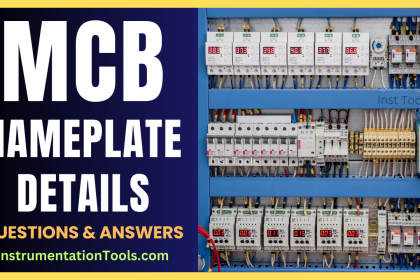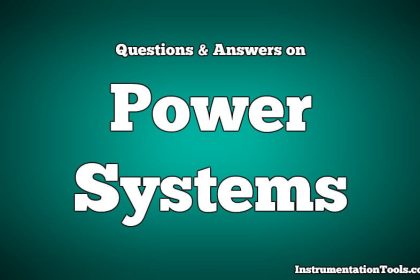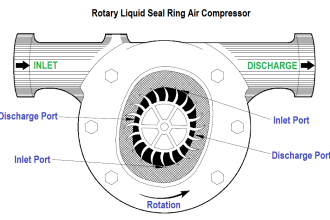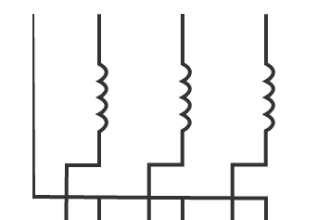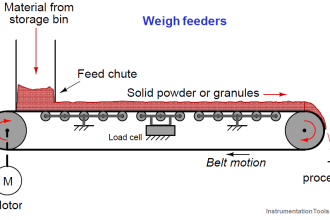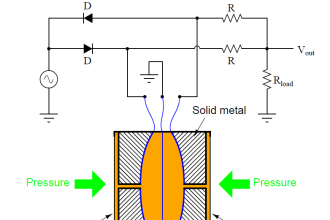In this article, you will find the power system protection multiple choice questions and answers for electrical, and electronics engineers.
Power System Protection Multiple Choice Questions
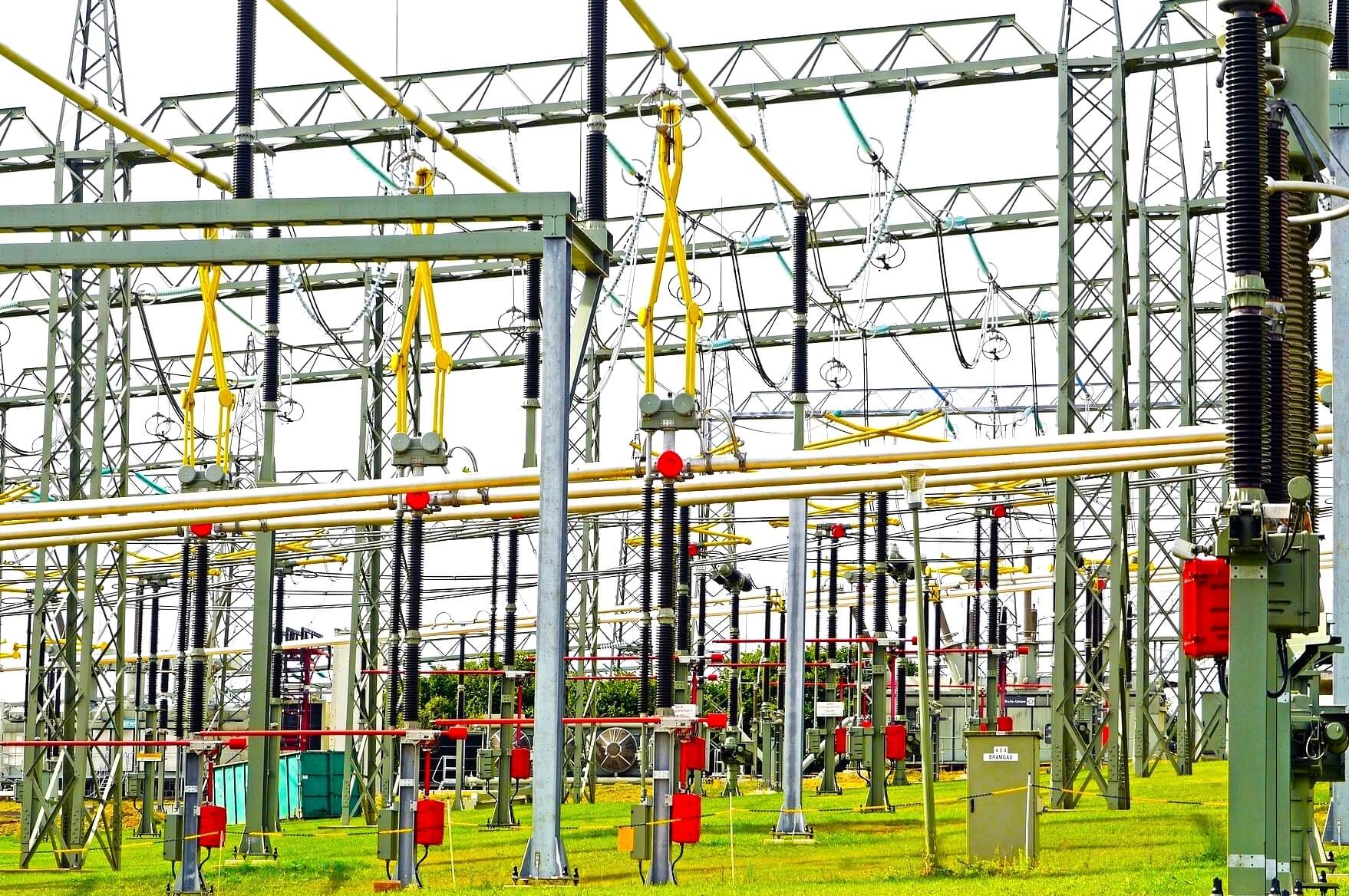
The below list provides all the objective questions and answers related to electrical power systems.
Answers are available at the bottom of the article.
1. Phase Directional Overcurrent Relay with 90-degree connection – MTA is 45 degrees at phase A.
The relay will signal trip, when the phase A phase Tripping zone has an angle
| A) | From 0 degrees to 180 degrees Lagging |
| B) | From 45 degrees Leading to 135 degrees Lagging |
| C) | From 45 degrees leading to 90 degrees Lagging |
| D) | From 45 degrees Lagging to 135 degrees Leading |
2. Phase Directional Overcurrent Relay with 60-degree connection, when considering only relays at Phase A, which quantity is Operating and which quantity is Polarizing respectively
| A) | current phase A as Operating and the sum of the voltage vector between phase A-B and phase A-C is Polarizing |
| B) | current phase A as Operating and the voltage between phase B-C is Polarizing |
| C) | current phase A as Operating and the voltage between Phase A-B is Polarizing |
| D) | current phase A as Operating and the sum of the voltage vector between the B-C phase and the A-C phase is Polarizing |
3. One relay reactance has the function according to the equation y = 4.5
If a transmission line has a total impedance of 4 + j4 ohms, assuming that the fault at the end of the transmission line and The arc resistance is 0.5 ohm. What is the response of the relay?
| A) | The relay will operate correctly because the relay can see the fault. |
| B) | Relays are slow because the arc resistance is higher than the relay can see. |
| C) | Relays do not work. |
| D) | The relay is faulty because the fault is outside the relay zone of the relay. |
4. Which type of relay is suitable for detecting Faults in high-voltage power transmission systems?
| A) | Distance Relays |
| B) | Over Voltage Relays |
| C) | Under Voltage Relays |
| D) | Directional Power Relays |
5. Which of the following are the impedance relay properties of the impedance relay?
| A) | If there is an arc short circuit, the impedance relay will fail. |
| B) | Impedance relay is suitable for preventing short-circuit between the phase of medium-length transmission lines. |
| C) | When the Power Swing occurs in the electrical system Impedance relays still function correctly without impact. |
| D) | If you want the relay impedance to work in the direction Must be used in conjunction with a directional relay |
6. Analysis of the operation of the relay.
The distance is generally used which diagram?
| A) | P.F. Diagram |
| B) | I-T Diagram |
| C) | V-I Diagram |
| D) | R-X Diagram |
7. Setting the distance relay, Step Distance Protection, Relay Zone 3, will have to set the delay time to work at the estimated time.
| A) | The delay time is about 1.0 – 3.0 seconds. |
| B) | Time delay is approximately 0.5 – 1.0 seconds. |
| C) | Time delay is approximately 0.3 – 0.5 seconds. |
| D) | Time delay is approximately 3.0 – 5.0 seconds. |
8. How does Power System Swing affect distance relays?
| A) | Make the Distance Relays run incorrectly by cutting the circuit if the impedance, that the relay sees at that time is lower than the set |
| B) | Make the Distance Relays run incorrectly by cutting the circuit if the impedance value, that the relay sees is higher than the set value. |
| C) | Allowing Distance Relays to work to cut the circuit slower than usual. |
| D) | Does not affect distance relays |
9. Which is not the Directional Overcurrent Relay working condition?
| A) | When the direction of the current exceeds the limit given to the relay |
| B) | All of these answers |
| C) | When the Power Factor angle value is higher than the set value |
| D) | When the current value is greater than the value of Pick up |
10. Setting the distance relay, Step Distance Protection, Relay Zone 2 will have to set
| A) | Time delay approximately 0.3 seconds. |
| B) | Time delay about 1.5 seconds. |
| C) | Delay time about 0.8 seconds. |
| D) | Delay time about 1.0 seconds. |
11. Protection of high voltage power lines using a three-zone protection distance relay. If you want to avoid potential errors, you need to adjust the distance.
Zone 3 does not exceed any of the following values
| A) | The impedance of the next transmission line, the longest line |
| B) | Emergency Loading Impedance |
| C) | Arc Resistance |
| D) | Underreach |
12. Standard Inverse Overcurrent Relay is compatible with CT Ratio = 1000/5 A, Pick Up Value = 5 A, TMS = 0.1
When the Fault Current is 15 times the Relay Setting, how long does it work?
| A) | 1.5 seconds |
| B) | 0.25 seconds |
| C) | 0.1 seconds |
| D) | 2.5 seconds |
13. Input signal to distance relay
| A) | VT |
| B) | Instrument |
| C) | CT |
| D) | CT and VT |
14. When distance relay works?
| A) | If the impedance appears at the relay is equal to the set impedance Relays may or may not work. |
| B) | Both If the impedance appears at the relay, the value is lower than the set impedance Relay will work and If the impedance appears at the relay is equal to the set impedance Relays may or may not work. |
| C) | If the impedance appears at the relay, the value is higher than the impedance set. Relay will work |
| D) | If the impedance appears at the relay, the value is lower than the set impedance Relay will work |
15. The Radial System distribution system, as shown, requires both relays to have a Standard Inverse (SI) operation curve according to IEC 60255.
If the relay at Bus B is set to be done Work as backup protection for the relay at Bus A, with a margin of time = 0.35 seconds.
Ask how much TMS of the relay B must be adjusted at Bus B
The image was available in the quiz file.
| A) | TMS of relay at Bus B = 0.35 |
| B) | TMS of relay at Bus B = 0.176 |
| C) | TMS of relay at Bus B = 0.078 |
| D) | TMS of relay at Bus B = 0.095 |
16. “Quadrilateral Relay” is a suitable relay for use in which manner of protection.
| A) | Used for protection When the phase conductor cable of the feeder line falls out on the ground |
| B) | Used for shielding the transmission line when the Faults occur between phase conductors |
| C) | Used for protection When there is a short circuit between the phase conductor cable of the input cable |
| D) | Used for the protection of the transmission line when the faults occur between the phase conductor and the ground |
17. Over current relays with Extremely Inverse (EI) operation, fault current is 5,000 A.
CT Ratio is 800/5, current setting or PSM is 125%, If you want the relay to operates at 2.0 seconds, how much TMS value should be adjusted?
| A) | TMS = 0.60 |
| B) | TMS = 1.19 |
| C) | TMS = 0.95 |
| D) | TMS = 3.33 |
18. Over current relays with Standard Inverse (SI) Curve operation, Fault current is 4,000 A.
If you want the relay to operate at 1.5 seconds, CT Ratio is 800/5, current value setting is 100%, what will be the TMS setting?
| A) | TMS = 0.35 |
| B) | TMS = 0.3 |
| C) | TMS = 0.2 |
| D) | TMS = 0.25 |
19. One of the impedance relays has a circular motion.
A radius of 10 ohms has a central point at the origin.
Used together with the reactance relays that have the function according to the condition of the equation y – 8 = 0, at the intersection between the lines, the behavior of both relays have R of
| A) | 8.0 ohms |
| B) | 6.0 ohms |
| C) | 10.0 Ohm |
| D) | 4.0 ohm |
20. What is distance relay’s Overreach?
| A) | The distance relay sees the location of the point where the faults are closer than reach value. |
| B) | The distance relay sees the location of the spot where the Faults but does not work. |
| C) | The distance relay sees the location of the spot where the faults are far more than the set value. |
| D) | The distance relay does not see the location of the Faults. |
21. Phase Directional Overcurrent Relay with 90-degree connection when considering only relays at Phase A, which quantity is Operating and which quantity is Polarizing respectively
| A) | current phase A as Operating and the sum of the voltage vector between the B-C phase and the A-C phase is Polarizing |
| B) | current phase A as Operating and the voltage between phase B-C is Polarizing |
| C) | current phase A to Operating and the sum of the voltage vector between phase A-B and phase A-C is Polarizing |
| D) | current phase A to Operating and the voltage between Phase A-B is Polarizing |
22. Which is the feature of the Impedance Relay?
| A) | Use the impedance size only in setting the relay. |
| B) | It is a non-directional distance relay and uses only the impedance size in the relay setting. |
| C) | If the measured impedance value is greater than the impedance setting, the relay will work. |
| D) | It is a non-directional distance relay. |
23. Impedance Relay is suitable for preventing short-circuits between the phase of transmission lines of which length
| A) | Medium length transmission lines |
| B) | Transmission line with short length |
| C) | The transmission line has a very long cable length. |
| D) | Longitudinal cables |
24. Which distance relay is suitable for the protection of power lines that have a very long cable length?
| A) | Impedance Relay |
| B) | Quadrilateral Relay |
| C) | Mho Relay |
| D) | Lenticular Relay |
25. How does the fault resistance caused by arc affect Distance Relay?
| A) | causing the relay to malfunction if Fault Resistance caused by the arc is very valuable, The impedance appears at the visible relay going out of the protection zone of the relay that has been set to the relay. |
| B) | Making the relay malfunction if Fault Resistance caused by the arc is very valuable, Relays will slow down. |
| C) | causing the relay to malfunction if Fault Resistance caused by the arc is very valuable, The relay will not see impedance. The relay will not work. |
| D) | Fault Resistance caused by arc Does not affect the operation of all types of relay distance |
26. Over current relays with Very Inverse operation (VI) [IEC 60255] by setting TMS to 0.6 if using CT Ratio 600/5 A and adjusting the current to 100%, the fault current is equal to 4,000 A.
Calculate how much time the relay needs to operate?
| A) | 3.375 seconds |
| B) | 2.382 seconds |
| C) | 2.025 seconds |
| D) | 1.429 seconds |
27. Setting the distance relay, Step Distance Protection, Relay Zone 1 should be set to protect the transmission line in the approximate distance
| A) | 40 – 50% of the transmission line length in the range that needs protection. |
| B) | 50 – 60% of the transmission line length in the range that needs protection. |
| C) | 80 – 90% of the transmission line length in the range that needs protection |
| D) | 120% of the transmission line length in the range that needs protection |
28. Phase directional overcurrent relay of 90-degree connection type – 45 degree MTA.
At maximum torque, the power factor is
| A) | PF = 0.5 lagging |
| B) | PF = 0.866 lagging |
| C) | PF = 0.707 lagging |
| D) | PF = 1.0 |
29. What are the characteristics of over current relays? Popular today
| A) | Definite Time Overcurrent Characteristics |
| B) | Inverse Definite Minimum Time Overcurrent Characteristics |
| C) | Definite Current Overcurrent Characteristics |
| D) | Inverse Time Overcurrent Characteristics |
30. Which of the following relays Arranged in the Distance Relays group
| A) | Offset-Mho Relay and Over Current Relay |
| B) | Reactance Relay and Frequency Relay |
| C) | Impedance Relay and Under Voltage Relay |
| D) | Mho Relay and Offset-Mho Relay |
31. The Radial System distribution system, as shown, requires both relays Curves are Extremely Inverse (EI) operation [IEC 60255].
If the relay at Bus B is set to Back up protection of the relay at Bus A using the difference of working time (Grading Margin) equal to 0.35 seconds when the Fault occurs within the Primary Zone (F2) of the relay of Bus B itself, then How much time the relay at Bus B will require to pick up.
The image was available in the quiz file.
| A) | 0.433 seconds |
| B) | 0.260 seconds |
| C) | 0.137 seconds |
| D) | 0.350 seconds |
32. The transmission line size 2.5 + j3.5 ohm must set the value of the impedance relay to the maximum value.
Therefore, able to protect the LTC ARC Fault with the size of 1.0 ohms
| A) | 3.5 + j3.5 ohm |
| B) | 1.5 + j3.5 ohm |
| C) | 2.0 + j4 ohms |
| D) | 3 + j4 ohm |
33. Very Inverse Overcurrent Relay has the following settings:
Time Multiplier Setting (TMS) = 0.3, CT Ratio = 1000/1 A by setting the current to 100%, if the Fault current 10,000 A.
Calculate how much time the relay needs to operate?
| A) | 0.45 seconds |
| B) | 0.90 seconds |
| C) | 0.24 seconds |
| D) | 4.00 seconds |
34. Setting the distance relay, Step Distance Protection, Relay Zone 1, what is the working time setting?
| A) | Time delay is 0.5 seconds. |
| B) | Time delay is 0.3 seconds. |
| C) | 1.0 seconds delay |
| D) | Adjust to work immediately |
35. Electromechanical phase directional overcurrent relay type 90-degree connection – 45-degree MTA.
Angle between Operating Quantity and Polarizing, what is the maximum amount of torque generated?
| A) | The maximum torque will occur at a 90-degree angle. |
| B) | The maximum torque occurs at a 45-degree angle. |
| C) | The maximum torque occurs at a 30-degree angle. |
| D) | The maximum torque occurs at a 60-degree angle. |
36. Which terms describe the meaning of the device “CCVT” correctly
| A) | Application of a transformer to test the voltage to the serial with a high voltage regulator to save costs. |
| B) | Application of a voltage-controlled transformer with a low-voltage of capacitor diode |
| C) | Using a capacitor in parallel with a pressure transformer for convenience and accuracy in measurement |
| D) | High-voltage attenuation by using a voltage transformer with voltage diode controller on the secondary side of the transformer. |
37. Which distance relay is suitable for the protection of power lines that have a very long cable length?
| A) | Lenticular Relay |
| B) | Quadrilateral Relay |
| C) | Impedance Relay |
| D) | Mho Relay |
38. High-voltage power lines have an impedance per phase of 1 + j10 ohms/phase.
Determine how much the size and angle of impedance respectively are.
| A) | 10.00-ohm, phase angle 10 degrees / phase |
| B) | 10.00-ohm, phase angle 90 degrees / phase |
| C) | 10.05 ohms, phase angle 84.29 degrees / phase |
| D) | 1.00-ohm, phase angle of 10 degrees / phase |
39. The impedance value is the value that the distance relay sees when knowing the CT Ratio and VT Ratio values must be multiplied by any multiplier.
| A) | CT Ratio / VT Ratio |
| B) | CT Ratio x VT Ratio |
| C) | VT Ratio / CT Ratio |
| D) | (CT Ratio / VT Ratio)2 |
40. Relay The distance to be used to protect the transmission line has a CT Ratio = 1000/5 A and VT Ratio = 115 kV / 110 V.
What is the multiplier value for adjusting the relay operation?
| A) | 0.1913 |
| B) | 0.0213 |
| C) | 0.1713 |
| D) | 0.5130 |
41. What is the feature of the Mho Relay feature?
| A) | Most Impedance falls into the 1st quadrant on the R-X diagram. |
| B) | A directional relay |
| C) | Circumference on the R-X diagram at the origin point |
| D) | If the measured impedance value is greater than the impedance setting, the relay will work. |
42. One of the impedance relays has a circular motion, with a radius of 4 ohms.
The center is at the origin.
When connected with a directional relay (Directional Relay) that has the characteristics According to the equation y = -x, what is the impedance value appears where the relay will not work.
| A) | 1.5 + 3.5 ohms |
| B) | 2 – j3 ohm |
| C) | 2.5 + j3 ohms |
| D) | 2 + j3 ohm |
43. Current transformer (CT) with coordinate size, Burden 15 VA, test rate 200/5 A Accuracy Class 10 P 20, What is the value of composite error?
| A) | 2% |
| B) | None of these answers |
| C) | 5% |
| D) | 10% |
44. In the Ground Fault Distance Relay setting for protection, when a single line to ground fault (SLG) occurs, which parameters must be considered
| A) | Compensation Factor |
| B) | Full Load Current |
| C) | Power Factor |
| D) | Frequency Factor |
45. Which of the following relays is arranged in the Distance Relays group
| A) | All of these answers |
| B) | Offset-Mho Relay |
| C) | Mho Relay |
| D) | Reactance Relay |
46. The setting for Phase Fault Distance Relay must use which Sequence Impedance to adjust the settings for the relay.
| A) | Negative Sequence Impedance |
| B) | Positive and Negative Sequence Impedance |
| C) | Zero Sequence Impedance |
| D) | Positive Sequence Impedance |
47. “Lenticular Relay” has the following features:
| A) | To prevent transmission lines in the event of an arc with faults |
| B) | There is a narrow working area compared to Mho Relay. |
| C) | It is not good to protect the transmission line if there is a high load. |
| D) | There is a working area on the R-X diagram. It is a triangle. |
48. Impedance Relay is suitable for preventing short-circuit between the phase of transmission lines of any length
| A) | Transmission line with short length |
| B) | The transmission line has a very long cable length. |
| C) | Medium length transmission lines |
| D) | Longitudinal cables |
49. Using distance relay (Distance Relay) to protect power lines Why the zone of protections be divided into sections?
| A) | To be able to protect the transmission line throughout the length of the cable that needs protection |
| B) | All of these answers |
| C) | For effective protection, get rid of the Faults quickly, with high reliability. Distinguish correctly |
| D) | In order to be a Back Up Protection, allow the next transmission line |
50. Which of the following concerns the transmission line protection using Distance Relay?
| A) | Power Swing will not affect the operation of the distance relay. Because the electrical system will return to its normal state If the system is large enough |
| B) | Arc resistance affects Mho Relay rather than Impedance Relay. |
| C) | Distance relay is suitable for shielding the transmission line because it works very fast. Regardless of the type of fault or any position on the transmission line |
| D) | When a fault occurs with and arc resistance will affect the operation of the Reactance Relay. |
51. Protection of Earth Fault Protection in a 3-phase power system with Residual Connected method.
Where current transformer (CT) is required?
| A) | CT per Open Delta |
| B) | Nothing is right. |
| C) | CT per Wye |
| D) | CT per Delta |
52. Ground Directional Overcurrent Relay can use Which quantity to make a “Polarizing Signal” to let the relay know the direction.
| A) | only the Residual Current |
| B) | Phase Current alone |
| C) | both Residual Current and Residual Voltage |
| D) | Residual Voltage only |
53. What is the secondary standard Voltage of Voltage transformer: VT that is currently in use?
| A) | 100 V. and 150 V. |
| B) | 100 V. and 220 V. |
| C) | 220 V. and 380 V. |
| D) | 110 V. and 120 V. |
54. The Radial System distribution system, as shown, requires both relays have an Extremely Inverse (EI) function [IEC 60255] if the relay is adjusted as specified in the figure, Discrimination Between the relays at Bus A and the relay at Bus B using Grading Margin = 0.35 seconds, how much is the TMS of the relay B at Bus B
The image was available in the quiz file.
| A) | Relay at Bus B, set TMS = 0.433 |
| B) | Relay at Bus B, set TMS = 0.19 |
| C) | Relay at Bus B, set TMS = 0.06 |
| D) | Relay at Bus B, set TMS = 0.35 |
55. Overcurrent Relay has a Curve of Long Time Inverse (LTI) in accordance with IEC 60255, where the PSM = 5 and TMS = 1, relays will work for 30 seconds.
Let the relay work with 3.0 seconds at the same PMS value.
What is the TMS value?
| A) | 0.1 |
| B) | 0.01 |
| C) | 10.0 |
| D) | 0.2 |
56. Discrimination What is the current overload protection system?
| A) | It is a sequence of protection. By allowing relays that are near the source to work first and a remote relay to act as a backup |
| B) | It is set to allow relays in many systems. Work group by allowing the same type of relay to work simultaneously |
| C) | It is a sequence of protection. By allowing the main relay (Primary Relay) near the point of short circuit to work first and the backup relay that is far away has a is long enough Grading margin value to ensure that the backup relay will operate only if primary protection fail to operate. |
| D) | It is set to allow relays in many systems. Coordinate By allowing relays that are far from the most paid source to work first and relays that are in the position near the source The work is the next order without the need for grading margins. |
57. Ground Directional Overcurrent Relay, when Single Line to Ground Faults occur. polarization voltage is
| A) | Approximately 3 times the zero-sequence current of the phase that causes short-circuit grounding |
| B) | Equal to the phase voltage of the system |
| C) | equal to the voltage, zero sequence pressure of the phase that causes short-circuit grounding |
| D) | Approximately 3 times the pressure of the zero sequence of the phase that causes short-circuit grounding |
58. Phase Directional Overcurrent Relay Type Electromechanical type 90-degree Connection – 30-degree MTA.
What is the maximum torque that the Power Factor angle?
| A) | 30 degrees |
| B) | 0 degrees |
| C) | 45 degrees |
| D) | 60 degrees |
59. Which of the following relay Is the main relay used to protect the three-phase high-voltage power transmission line (Step Three Zone Protection)
| A) | Pilot wire or Differential relay |
| B) | Mho relay and Reactance relay |
| C) | Both Mho relay and Reactance relay and Quadrilateral relay and Impedance relay |
| D) | Quadrilateral relay and Impedance relay |
60. Using distance relay (Distance Relay) to protect power lines Why must the zone of protections be divided into sections?
| A) | To be able to protect the transmission line throughout the length of the cable that needs protection |
| B) | For effective protection, get rid of the Faults quickly, with high reliability. Distinguish correctly |
| C) | All of these answers |
| D) | In order to be a Back Up Protection, allow the next transmission line |
61. In High voltage power transmission protection, in general what type of relay is used to protect
| A) | Overcurrent Relay |
| B) | Differential Relay |
| C) | Distance Relay |
| D) | Voltage Relay |
62. Over current relays have a Standard Inverse operation (SI) [IEC 60255] with a TMS setting of 0.5
If using the CT Ratio 800/5 A and adjusting the current to 100%, The fault current is equal to 5,000 A.
Calculate how much time the relay needs to operate?
| A) | 3.750 seconds |
| B) | 0.945 seconds |
| C) | 1.875 seconds |
| D) | 0.500 seconds |
63. Which of the following distance relays is with features of direction?
| A) | Reactance Relay |
| B) | Impedance Relay |
| C) | Mho Relay |
| D) | Mho Relay and Impedance Relay |
64. Setting the distance relay, Step Distance Protection, Relay Zone 1 should be set to protect the transmission line in the approximate distance
| A) | 50 – 60% of the transmission line length in the range that needs protection. |
| B) | 40 – 50% of the transmission line length in the range that needs protection. |
| C) | 80 – 90% of the transmission line length in the range that needs protection |
| D) | 120% of the transmission line length in the range that needs protection |
65. What are the properties of Vacuum Circuit Breaker?
| A) | High dielectric strength Use pressure-reducing interrupter to require frequent maintenance. |
| B) | High dielectric strength Use the arc quenching in a vacuum condition. Interrupter requires frequent maintenance. |
| C) | Use the arc quenching in vacuum. With high dielectric strength. Interrupter does not require frequent maintenance. |
| D) | High dielectric strength Use the pressure-interrupter arc quenching without frequent maintenance. |
66. “Rated Burden” of the current transformer (CT) means
| A) | Secondary voltage rating of current transformer |
| B) | Secondary standard current value of current transformer |
| C) | The primary voltage rating of the current transformer |
| D) | The maximum load rating of the secondary circuit of the current transformer may be defined as VA or Ohm. |
67. Why do we use Distance Relay to protect high voltage power lines?
| A) | Because the distance relay is cheaper than other relays and convenient to use |
| B) | Because the distance relay is a directional relay, it is more reliable than using other relays. |
| C) | Because the distance relay is a relay that uses both current and operating voltage, it is more reliable than using other relays. |
| D) | Because the short-circuit current in the power system depends on the system configuration, we therefore use impedance measurement per distance instead of other relays. |
68. “CCVT” stands for what
| A) | Coupling Capacitor Voltage Transformer |
| B) | Circuit Capacitor Voltage Transformer |
| C) | Constant Coupling Voltage Transformer |
| D) | Coupling Circuit Voltage Transformer |
69. Over current relays Extremely Inverse (EI) [IEC 60255] by setting TMS to 0.5 if using CT Ratio 1200/5 A and adjusting the current to 100% When the fault occurs and the value is equal to 7,000 A.
What will be the tripping time?
| A) | 1.211 seconds |
| B) | 2.422 seconds |
| C) | 0.094 seconds |
| D) | 1.667 seconds |
70. What is Distance Relay Reach?
| A) | At Long distance on the transmission line Whenever the Faults occur, the relay does not work. |
| B) | The correct operation of the relay |
| C) | Relay failure |
| D) | At Long distance on the transmission line Whenever the Faults occur, the relay works |
71. Which is not a protective system?
| A) | Instrument Transformers |
| B) | Batteries |
| C) | Circuit Breaker & Trip Circuit |
| D) | Power Transformer |
72. Faults on the overhead line in a 3-phase system, which has the highest frequency of occurrence
| A) | Line to Line to Ground Fault |
| B) | None of these answers |
| C) | Line to Line Fault |
| D) | Single Line to Ground Fault |
73. Standard Inverse Overcurrent Relay connected to the current transformer (CT) with Current Ratio of 1000/1 A, TMS = 0.1, adjusted to 125% if the current size of the fault occurs 5,000 A, relay operating time is
| A) | 5.0 seconds |
| B) | 0.1 seconds |
| C) | 0.5 seconds |
| D) | 0.43 seconds |
74. What is the feature of the Mho Relay feature?
| A) | Circumference on the R-X diagram is at the origin point |
| B) | Most of Impedance falls into the 1st quadrant on the R-X diagram and is a self-contained relay |
| C) | Most of Impedance falls into the 1st quadrant on the R-X diagram. |
| D) | It is a self-contained relay. |
75. One line of transmission is 80 km long with the impedance Z = 0.03 + j 0.21 Ohm / km.
What is the admittance of this transmission line?
| A) | 0.667 – j4.673 Mho |
| B) | 0.416 – j0.059 Mho |
| C) | 0.0083 – j0.058 Mho |
| D) | 33.33 – j4.762 Mho |
76. How does the Power System Swing affect the distance relay?
| A) | No effect on the relay. |
| B) | When the Power System Swing occurs, the relay may over-reach |
| C) | When the Power System Swing occurs, the relay may cause damage due to over-pressure. |
| D) | When the Power System Swing occurs, the relay may under-reach |
77. Extremely Inverse Overcurrent Relay is set as follows:
Time Multiplier Setting (TMS) = 0.2, CT Ratio = 1000/5 A, Pick Up Value = 4 A. Fault = 8,000 A.
Calculate how much time relay need to works?
| A) | 0.16 seconds |
| B) | 0.33 seconds |
| C) | 0.12 seconds |
| D) | 0.25 seconds |
78. Which is not the function of the current transformer (CT)?
| A) | Convert the current of the electrical system to a low value. For the sake of protection |
| B) | Separate the secondary circuit from the primary circuit for the safety of the operator. |
| C) | Convert the current size of the electrical system, from high value to a low value. For the sake of measurement and protection |
| D) | Make it possible to use the standard current for Secondary |
79. The high-voltage power line has an impedance per phase of 10 ohms, a 70-degree angle.
If you want to protect the transmission line, you can get 80% of the entire line length.
Adjustable impedance value, what is the setting
| A) | 10 ohms |
| B) | 7 ohms |
| C) | 8 ohms |
| D) | 9 ohms |
80. Which of the above mentioned “Faults” in the electrical system is wrong from reality?
| A) | Faults means only the short circuit in the electrical system. |
| B) | The occurrence of over load is the Faults in a power system. |
| C) | The occurrence of over voltage is classified as a fault in a power system |
| D) | Under Frequency is a Faults in a power system. |
81. Reducing the risk of underreach of distance relay Can be solved by
| A) | Set the angle of Impedance Relay to be less. |
| B) | Set the angle of the Mho Relay to be less. |
| C) | Adjust the angle of the Impedance Relay more. |
| D) | Adjust the angle of the Mho Relay more. |
82. What are “Instrument Transformers”?
| A) | 3 types: Current Transformer, Voltage Transformer and Transducer |
| B) | 2 types: Current Transformer and Transducer |
| C) | 2 types: Current Transformer and Voltage Transformer |
| D) | 1 type: Current Transformer |
83. What are the characteristics of the Mho Relay distance relay function on the R-X diagram mode?
| A) | The working area of the relay is trapezoidal, covering the origin. |
| B) | The working area of the relay is circular with a circumference cut through the origin. Most impedance values fall into the 1st quadrant. |
| C) | The working area of the relay is square. Cover the origin. |
| D) | The working area of the relay is circular with the center of origin. |
84. Which of the following distance relays is with features of no direction?
| A) | Lenticular Relay |
| B) | Impedance Relay |
| C) | Mho Relay |
| D) | Offset Mho Relay |
85. Which is not the characteristic of faults in the power system?
| A) | Loss of Synchronism of Generators |
| B) | Under Load of Electric Motor |
| C) | Over Load of Generator |
| D) | The occurrence of a short circuit in the electrical system |
86. Current transformer transformers (CT), the size of the Burden 15 VA with a flow rate of 200/5 A Accuracy Class 10 P 20, Accuracy Limit Factor (ALF) is how much?
| A) | ALF is equal to 10 times |
| B) | ALF is equal to 20 times |
| C) | ALF is equal to 40 times |
| D) | ALF is equal to 15 times |
87. If you want to make Earth Fault Protection with Overcurrent Relay, the Relay Number is
| A) | 87 |
| B) | 50, 51 |
| C) | 67 |
| D) | 50N, 51N |
88. Reactance Relay (Reactance Relay) is a distance relay that will work when
| A) | The relay sees the impedance value lower than the set value. |
| B) | The relay sees the impedance value higher than the set value. |
| C) | The relay sees the reactance value lower than the set value. |
| D) | Relays see the reactance value higher than the set value. |
89. What are the features of SF6 Circuit Breaker?
| A) | High dielectric strength Use high pressure compression quenching to withstand high interrupting currents. |
| B) | High dielectric strength Use low-pressure arc-resistant interrupting currents |
| C) | Low dielectric strength Use low-pressure arc-resistant interrupting currents |
| D) | Low dielectric strength Use the high-pressure interrupting current to reduce the arc pressure. |
90. One transmission line has an impedance including a line of 6 + j8 ohms.
When each Fault occurs, there is very little arc resistance so it can be ignored.
If the impedance relay is set to look like Working in a circle, a radius of 8 ohms with a center point at the origin The relay can prevent the Fault from thinking about how many percent of the total transmission line length.
| A) | 70% |
| B) | 75% |
| C) | 90% |
| D) | 80% |
91. Standard Inverse Overcurrent Relay connected to the current transformer (CT) with Current Ratio of 1000/5 A, TMS = 0.2, set at 100% if the current size is caused 5,000 A, relay operating time is
| A) | 0.80 seconds |
| B) | 0.43 seconds |
| C) | 0.86 seconds |
| D) | 4.30 seconds |
92. Setting the distance relay, Step Distance Protection, Relay Zone 1, what is the working time setting?
| A) | Time delay is 0.3 seconds. |
| B) | Adjust to work immediately. |
| C) | Time delay is 0.5 seconds. |
| D) | 1.0 seconds delay |
93. The distance Relay to be used to protect the transmission line has a CT Ratio = 1000/5 A and VT Ratio = 115 kV / 110 V.
What is the multiplier value for adjusting the relay operation?
| A) | 0.0213 |
| B) | 0.1913 |
| C) | 0.5130 |
| D) | 0.1713 |
94. Radial distribution system as shown below Requiring both relays have a standard operation Inverse (SI) [IEC 60255].
Discrimination Between relays at Bus A and at Bus B using Grading Margin = 0.35 seconds and adjust the settings as specified to calculate the time that the relay at Bus B runs when the Fault occurs as shown
The image was available in the quiz file.
| A) | relay Operates at Bus B = 3.32 seconds |
| B) | relay Operates at Bus B = 2.97 seconds |
| C) | relay Operates at Bus B = 0.5 seconds |
| D) | relay Operates at Bus B = 0.35 seconds |
95. How to use the Residual Current as a Polarizing Signal to detect the direction of the Ground Faults. What should I do?
| A) | Bring the current signal from the connected CT at the neutral point of the device to Polarizing Signal. |
| B) | Bring the pressure signal obtained from VT to Y through resistance to Polarizing Signal. |
| C) | Bring the current signal which is obtained from CT in all 3 phases at the secondary side of the coil. |
| D) | Bring the current signal obtained from CT in the window through the 3 wires to Polarizing Signal |
96. Standard secondary current of current transformer For the current protection system, what is the standard value?
| A) | 1 A. and 5 A. |
| B) | 5 A. and 50 A. |
| C) | 5 A. and 10 A. |
| D) | 1 A. and 3 A. |
97. When the Arc Fault occurs in the power transmission line The operation of any of the following relays has the least risk of underreach problems.
| A) | Reactance Relay |
| B) | Impedance Relay |
| C) | Admittance Relay |
| D) | Mho Relay |
98. Which type of relay is suitable for detecting Faults in high voltage power transmission systems?
| A) | Under Voltage Relays |
| B) | Over Voltage Relays |
| C) | Directional Power Relays |
| D) | Distance Relays |
99. Setting the distance relay, Step Distance Protection, Relay Zone 3, will have to set
| A) | Time delay approximately 0.3 – 0.5 seconds. |
| B) | Time delay approximately 3.0 – 5.0 seconds. |
| C) | The delay time about 1.0 – 3.0 seconds. |
| D) | Time delay approximately 0.5 – 1.0 seconds. |
100. Setting the distance relay, Step Distance Protection, Relay Zone 2 should be set to protect the transmission line in the approximate distance
| A) | None of these answers |
| B) | 120 – 150% of the transmission line length in the range that needs protection |
| C) | 180 – 200% of the transmission line length in the range that needs protection |
| D) | 90 – 100% of the transmission line length in the range that needs protection. |
Click Here for Answers
If you liked this article, then please subscribe to our YouTube Channel for Electrical, Electronics, Instrumentation, PLC, and SCADA video tutorials.
You can also follow us on Facebook and Twitter to receive daily updates.
Next Quiz:
- Circuit Measurement Questions
- Network Theorems Questions
- Electricity Objective Questions
- Engineering Materials Questions
- Alternating Current Questions

